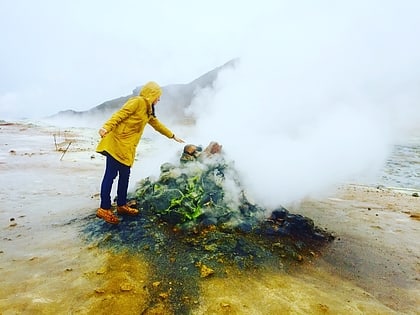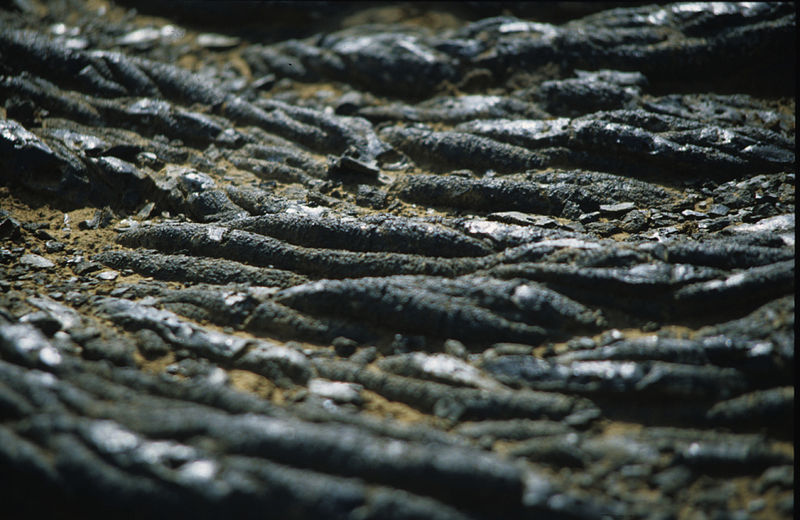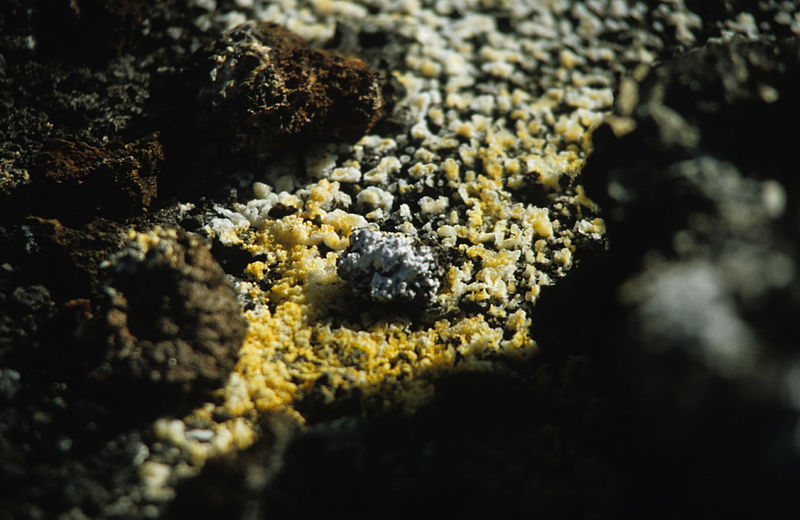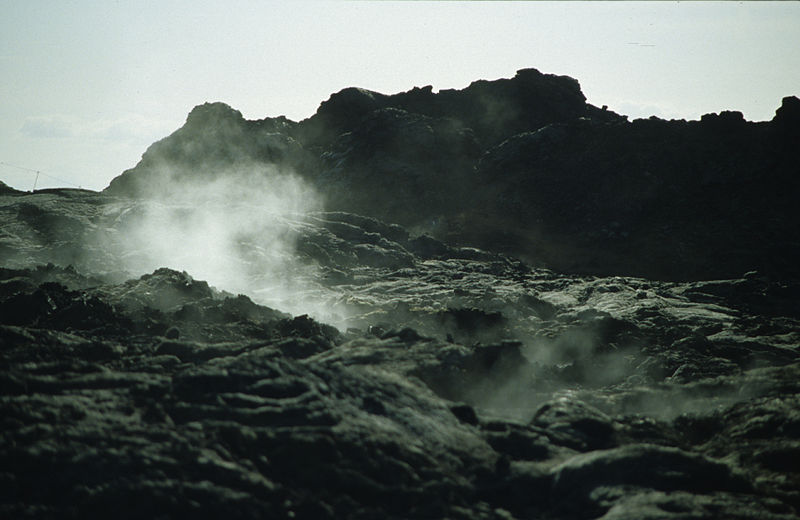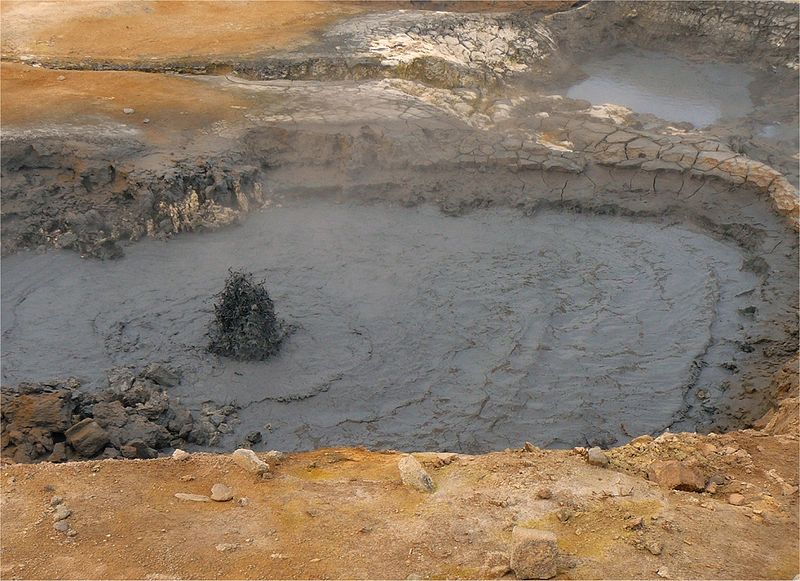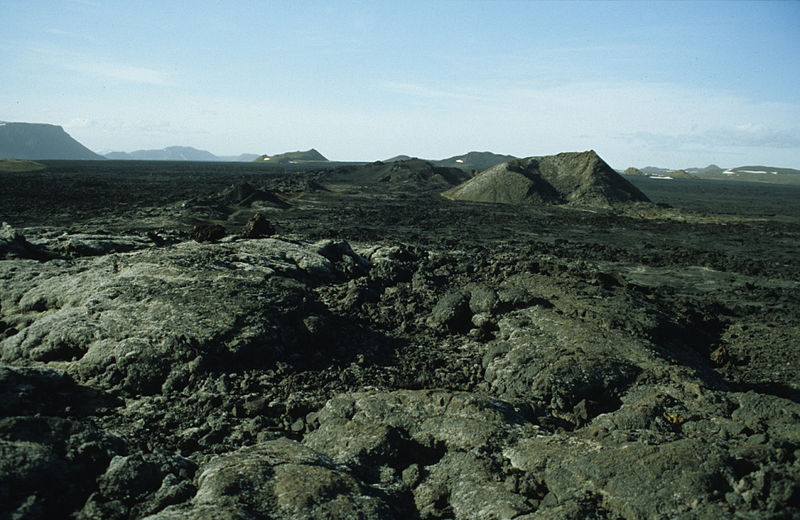Krafla
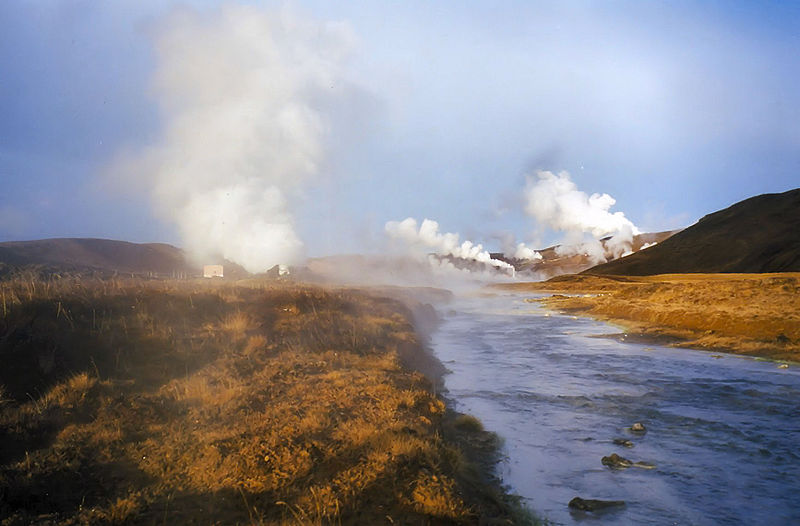
Facts and practical information
Krafla, a striking and active volcano located in the north of Iceland, stands as a testament to the island's dynamic geological activity. Krafla is not just a single peak but a volcanic system characterized by a 10-kilometer wide caldera and a 90-kilometer long fissure zone. The area is marked by its dramatic lava fields, boiling mud pools, and steaming fumaroles, which vividly illustrate the powerful forces at work beneath the Earth's crust.
The volcano has a storied history of eruptions, with recorded activity dating back to the 18th century. The most recent period of heightened activity, known as the Krafla Fires, occurred between 1975 and 1984 and was marked by a series of explosive events and lava flows. Despite the potential dangers associated with an active volcano, Krafla attracts thousands of visitors each year, drawn by the opportunity to witness firsthand the raw beauty of nature's power.
One of Krafla's most notable features is the Víti crater, a circular explosion crater filled with a striking blue-green lake. The crater, which is approximately 300 meters in diameter, was formed during an eruption in 1724 that marked the beginning of the Mývatn Fires. Today, Víti and the surrounding area are accessible to tourists, providing a unique opportunity to explore an otherworldly landscape that seems more akin to science fiction than reality.
Krafla's geothermal activity is not merely a spectacle; it is also harnessed for practical purposes. The Krafla Geothermal Power Station, which began operation in 1977, taps into the region's geothermal energy to generate electricity, showcasing how Iceland leads the way in renewable energy utilization.
Hálshreppur
Krafla – popular in the area (distance from the attraction)
Nearby attractions include: Kröflustöð.
